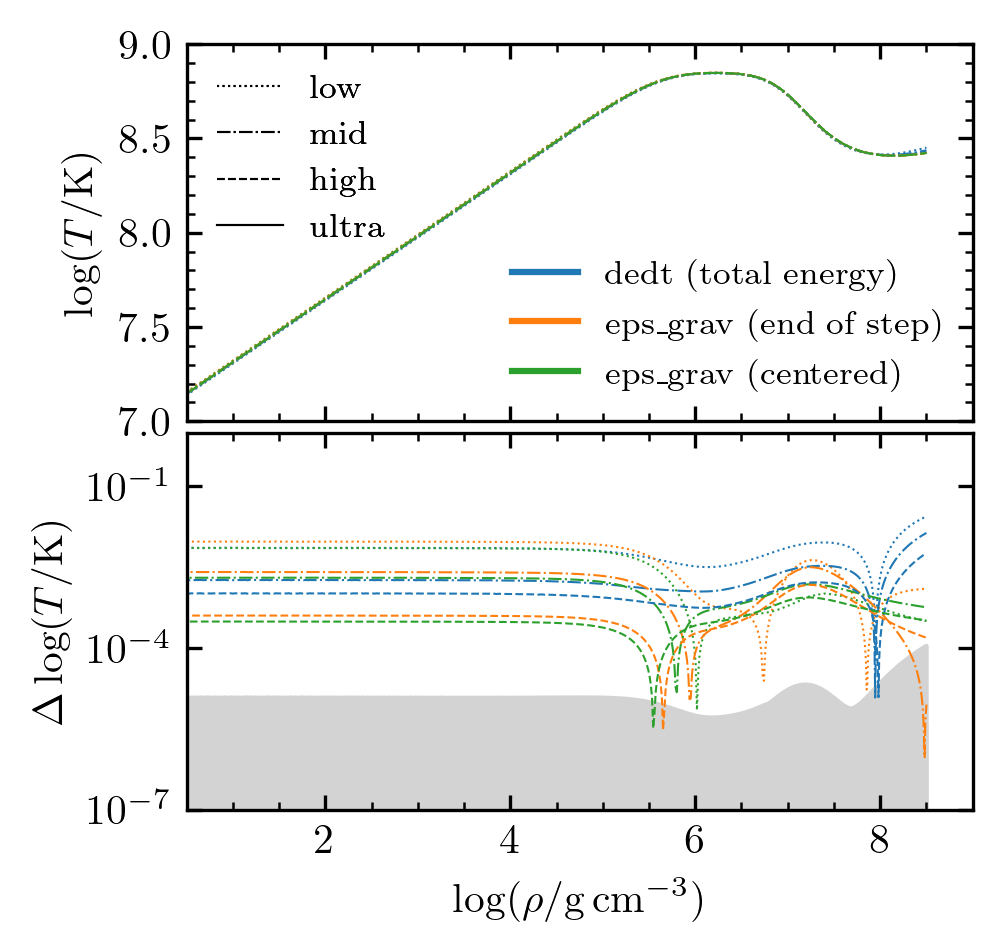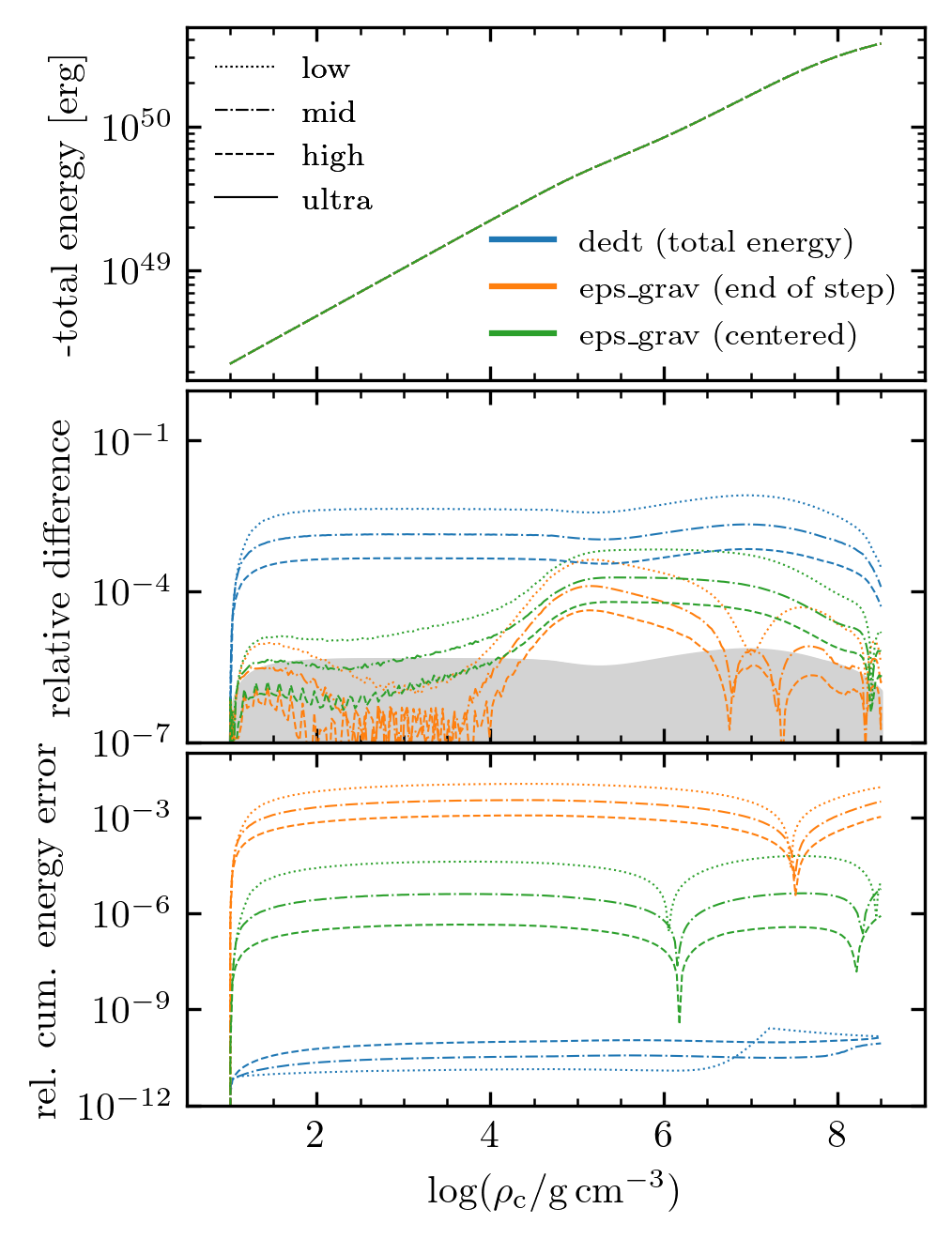carbon_kh¶
This test case evolves an initially low-density, 1.3 \({\rm M}_\odot\) stellar model with a pure carbon composition as it Kelvin-Helmholtz contracts.
The model begins at a central density of 10 \(\rm g\,cm^{-3}\) and we follow the contraction over a more than 2 dex in decrease in radius and a more than 7 dex increase in central density. Nuclear reactions are not considered. For simplicity, we assume that the radiative opacities are given by electron scattering and include standard thermal neutrino losses. We exclusively use the HELM EOS, as the use of a single EOS that is formulated from the Helmholtz free energy avoids most of the EOS inconsistencies.
This case is not meant to model an object realized in nature, but provides a simple example problem that has neither mass changes nor composition changes. It is nonetheless demanding as the conditions in the star vary tremendously during the evolution as material goes from non-degenerate conditions to conditions of relativistic electron degeneracy and the dominant energy loss mechanism transitions from radiative diffusion to optically-thin neutrino cooling.
The included Jupyter notebook (docs/carbon_kh.ipynb) provides
information about reproducing the following convergence study.



Last-Updated: 2021-08-26 (mesa e9d467610) by Josiah Schwab